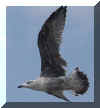 Yellow-legged
Gull- Geelpootmeeuw (L. michahellis): 2cy August
Yellow-legged
Gull- Geelpootmeeuw (L. michahellis): 2cy August
(last update: 08 december 2003)
YLG
1cy May
YLG
1cy June
YLG
1cy July
YLG 1cy August
YLG 1cy September
YLG 1cy October
YLG 1cy November
YLG 1cy December
YLG
2cy January
YLG 2cy February
YLG 2cy March
YLG 2cy April
YLG 2cy May
YLG 2cy June
YLG 2cy July
YLG 2cy August
YLG 2cy September
YLG 2cy October
YLG 2cy November
YLG 2cy December
YLG
3cy January
YLG 3cy February
YLG 3cy March
YLG 3cy April
YLG 3cy May
YLG 3cy June
YLG 3cy July
YLG 3cy August
YLG 3cy September
YLG 3cy October
YLG 3cy November
YLG 3cy December
YLG
sub-ad Jan.
YLG sub-ad Feb.
YLG sub-ad March
YLG sub-ad April
YLG sub-ad May
YLG sub-ad June
YLG sub-ad July
YLG sub-ad Aug.
YLG sub-ad Sept.
YLG sub-ad Oct.
YLG sub-ad Nov.
YLG sub-ad Dec.
YLG
adult January
YLG adult February
YLG adult March
YLG adult April
YLG adult May
YLG adult June
YLG adult July
YLG adult August
YLG adult September
YLG adult October
YLG adult November
YLG adult December
photo 18: Yellow-legged Gull michahellis 2cy, August 25 2000, Etaples / Boulogne-sur-Mer, NW France.

 Primary
moult score: P8 is fully grown, P9 has to grown a few inches and P10 is
halfway it's final length. Another example showing the secondary moult
stage. By July, most of the secondaries have been shed (click the thumbnail
for the secondary moult stage of July michahellis) but in the
majority of the birds, a small block of juvenile secondaries remain at the
inner half of the arm. Secondaries are moulted in descendant order, S1 is
the first moulted feather (the outermost secondary) and in a wave, new
secondaries grown inwards. The two or three innermost secondaries, often
hidden by the tertials, are moulted simultaneously and finally the small
block of juvenile secondaries is shed as well. Now, by the end of August,
it's this group of secondaries which are renewed last in line and as can
be seen in the left picture, the gap is closed from two directions.
Primary
moult score: P8 is fully grown, P9 has to grown a few inches and P10 is
halfway it's final length. Another example showing the secondary moult
stage. By July, most of the secondaries have been shed (click the thumbnail
for the secondary moult stage of July michahellis) but in the
majority of the birds, a small block of juvenile secondaries remain at the
inner half of the arm. Secondaries are moulted in descendant order, S1 is
the first moulted feather (the outermost secondary) and in a wave, new
secondaries grown inwards. The two or three innermost secondaries, often
hidden by the tertials, are moulted simultaneously and finally the small
block of juvenile secondaries is shed as well. Now, by the end of August,
it's this group of secondaries which are renewed last in line and as can
be seen in the left picture, the gap is closed from two directions.
The complete tail has been replaced. Note the gap in the central median
coverts and the outermost greater coverts which is still growing. All
second generation secondaries show a neat dark centre and a white zigzag
pattern created by the neat white fringes. Note the grey scapulars and the
predominantly white upper-tail coverts, contrasting with the broad
tail-band. The second generation inner primaries show a window, which is
more obvious in 2cy than it is in 1cy, but still not as well-defined as in
argenteus Herring Gull.